Corona and creativity: Art in the time of the pandemic
Gond, Rogan, Pashmina, Bidri and Warli artisans endured economic hardship during the COVID-19 lockdown, yet managed to hold on to their craft. Meet some artists who showcased their creations at India Craft Week 2021, held from February 18 to 21 in New Delhi.

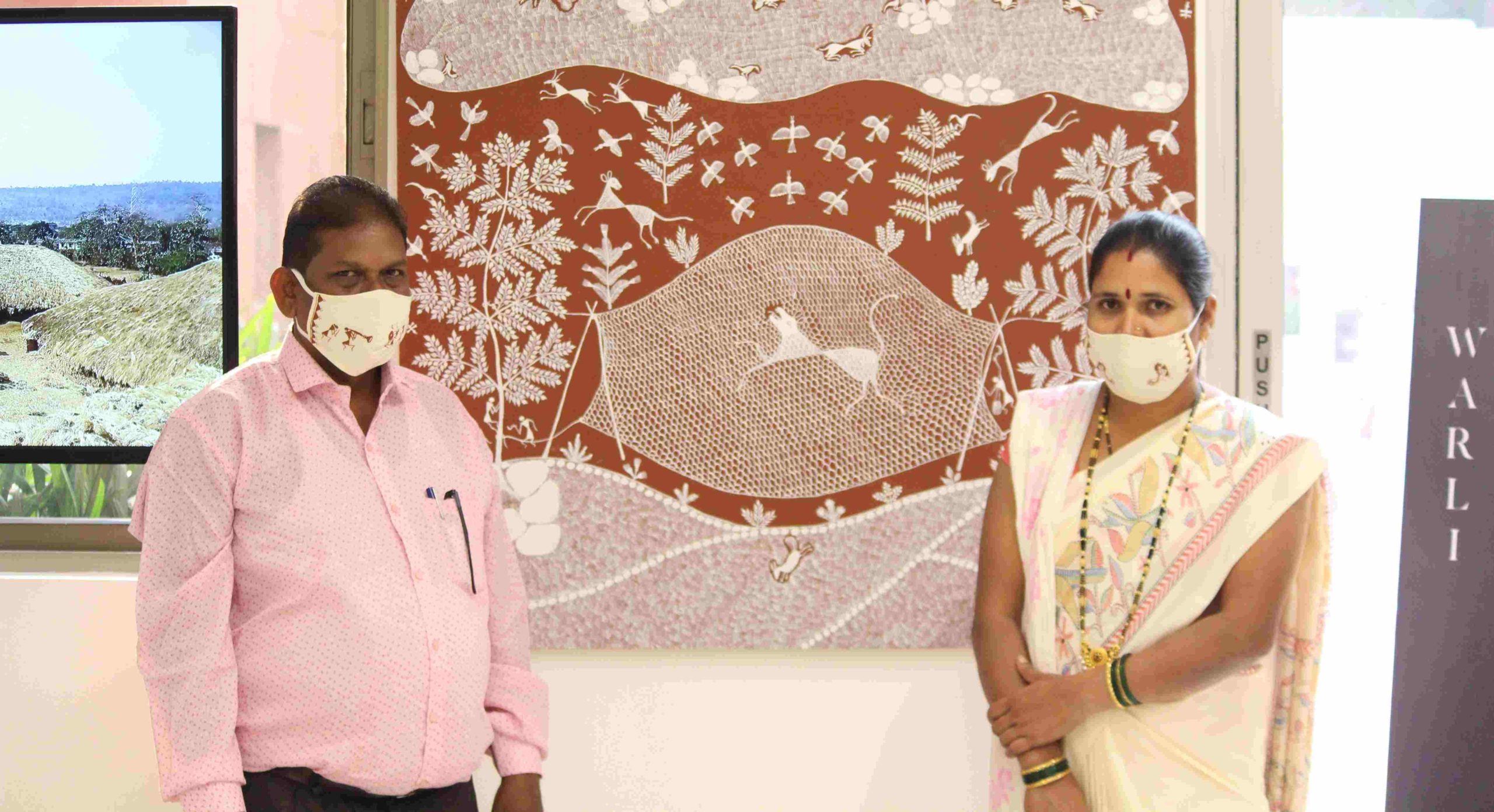
Warli artists Hingde Hant and his wife Rasika Hingde. Pic: Komal Badodekar
New Delhi
The COVID-19 pandemic crippled artisans like never before. With no end in sight and with no buyers for their craft, they have struggled to put food on the plate. But, as always, they rose to the challenge and managed to stay afloat.
India Craft Week 2021, held in New Delhi from February 18 to 21, showcased the work of a number of these artisans who survived adversity to uphold their traditional craft. Here are some of their stories.
Warli art
Hingde Hant and his wife Rasika Hingde reside in Palghar, Maharashtra. Ramesh has been creating Warli art for 25 years now. Rasika is also a Warli artist. They say their craft is not merely an art form, but an “active medium” to tell numerous stories borrowed from their tribal culture and everyday life, besides mythology.
This is the first time Rasika is taking part in such an event. “Women find it more difficult to take out time for art. Yes, it was a little difficult, but I also realised it could be a viable source of income,” she told Gaon Connection.
“Had my husband not supported me, I would have been languishing in the kitchen,” said Rasika, who has been creating Warli art for 15 years.
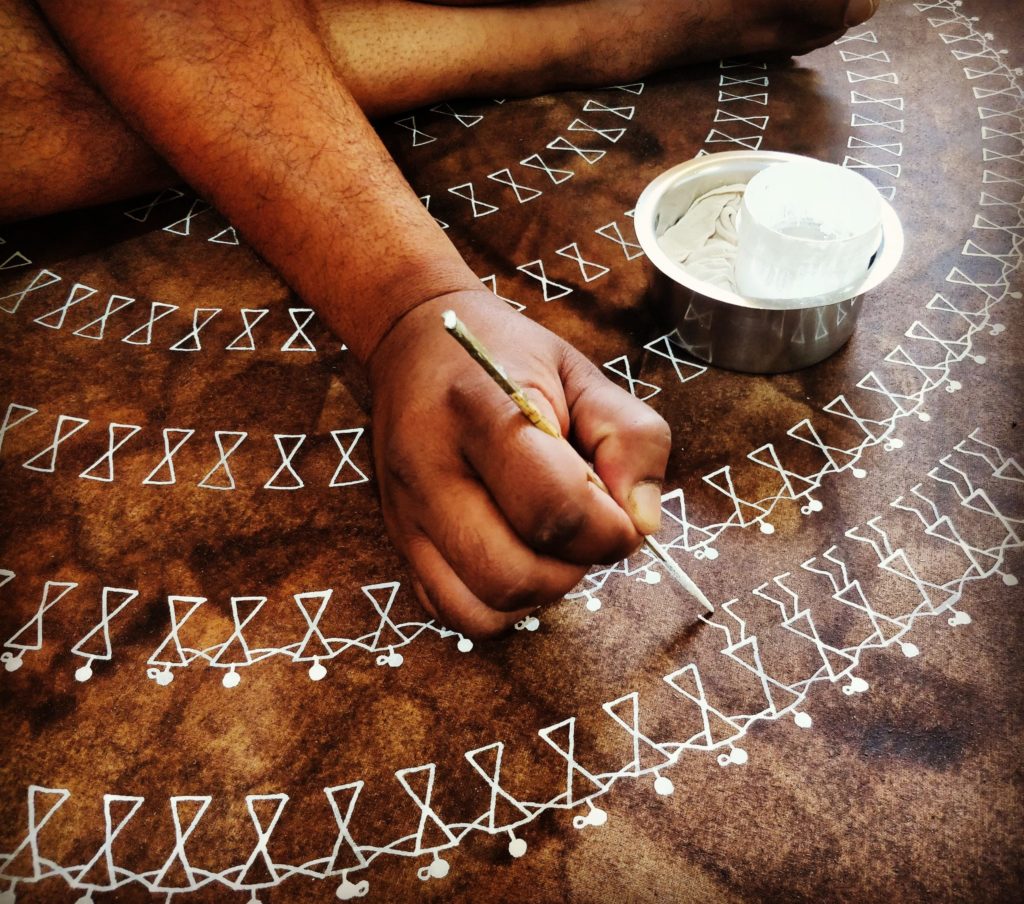
Pashmina weaving
At the Crafts Week, The Mir Brothers — Majid Ahmed Mir Fayaz Mir — from Jammu and Kashmir, whose family has been involved in Pashmina weaving for centuries, displayed a Pashmina shawl woven with poet-philosopher Kabir’s couplets in Urdu. This took more than five months to complete.
The brothers said that in 1990, it looked like Pashmina weaving would take a beating, but it revived with the help of the government and those who loved the craft.
The COVID-19 lockdown was particularly hard on the Kashmiri brothers. “We have seen many ups and downs in our life, but never have we faced such a bad phase. Our trade came to a halt. The situation is gradually improving. However, our well-established business will take years to return to what it was pre-Corona,” Majid, the elder of the two brothers, told Gaon Connection.
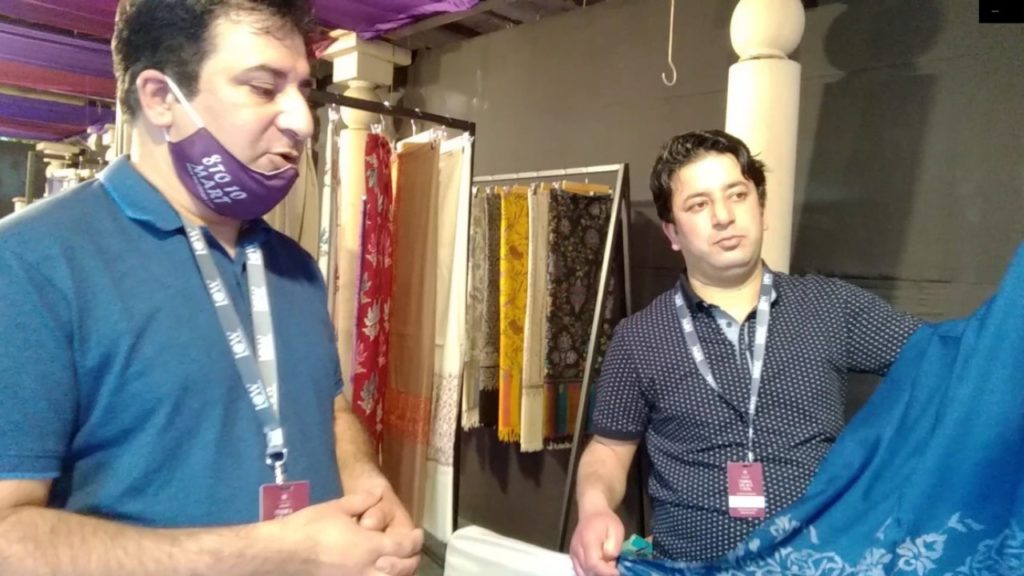
Rogan art
Rogan artist Jabbar Khatri is from Kachchh in Gujarat. His family has been practising the art form with Persian origins for over 300 years. “We have traditionally been depicting art on cloth with naturally-sourced products, including castor oil and dyes. This craft is very fine and delicate and calls for nimble handwork,” he told Gaon Connection.
Jabbar claimed there were just a handful of people who were fine practitioners of this craft, and all of them belong to his extended family. However, to keep the craft alive, Jabbar is training people in and around Kachchh in Rogan art, and he also visits institutions to speak and demonstrate the craft. “The COVID-19 crisis made us realise that we cannot just depend on our traditional craft. We struggled to find ration and sustain ourselves. It will take a long time to get back to what we once were,” he told Gaon Connection.
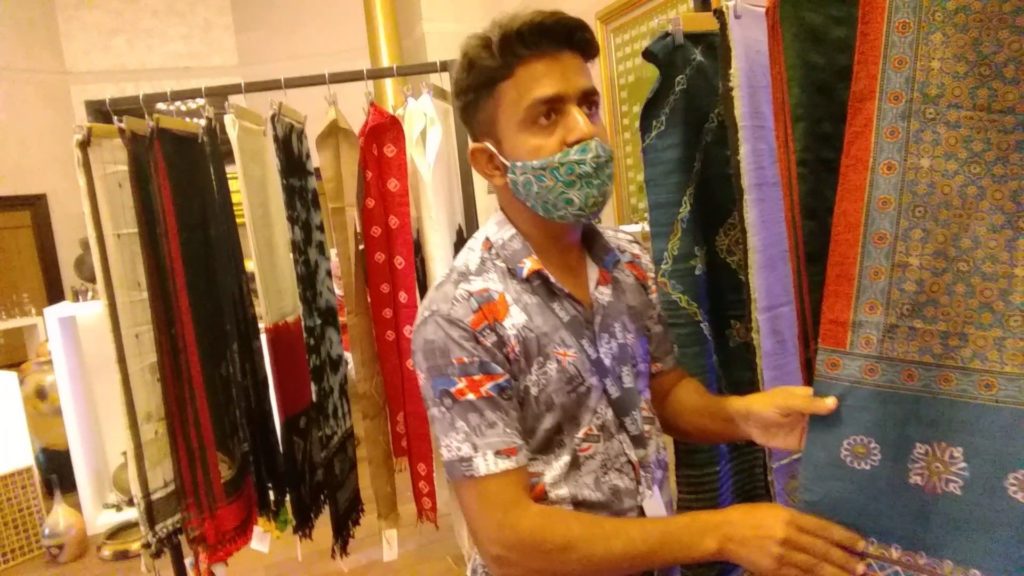
Also Read: To beat the lockdown blues, traditional artisans of Kachchh in Gujarat go online
Bidri art
Shah Rashid Ahmad Quadri has been engaged in Karnataka’s famous Bidri craft. It is said the art form reached India from Iran. Made from a mixture of zinc and copper, Bidri craft is adorned with intricate silver inlay. Today, you also find small artefacts and jewellery in Bidri craft. “I have lived this art since childhood,” Quadri said.
Quadri, who is from Bidar in Karnataka, is in his sixties and has spent his entire life learning and creating Bidri craft. He admitted he did look for an alternative livelihood in between, before he found fame and recognition for his craft.
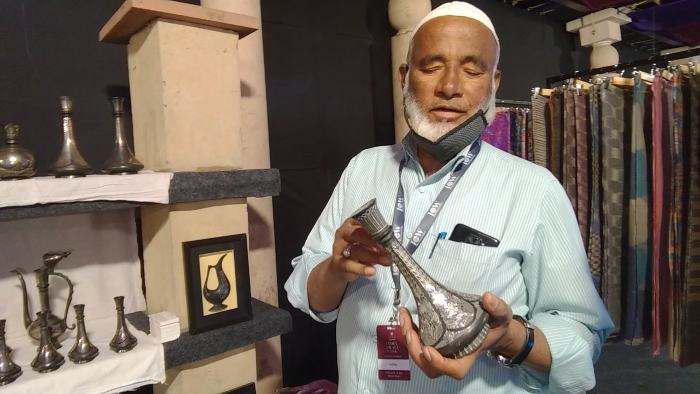
Gond art
Venkat Shyam was at the Crafts Week to showcase Gond tribal art, which he has been practising for 35 years. From murals to canvas, Gond art has travelled through the ages, and in the 21st century, it has created a space for itself in other formats too.
Venkat’s canvases come alive with the myriad hues of nature, of spring as well of autumn, the two seasons that have inspired the artist in him. “Adversity is a part of life,” said Shyam, who once struggled to find food, before success came calling.
Also Read: Mud houses are vanishing; Mandana art adorning its walls will too, if not preserved
Read the story in Hindi here.

